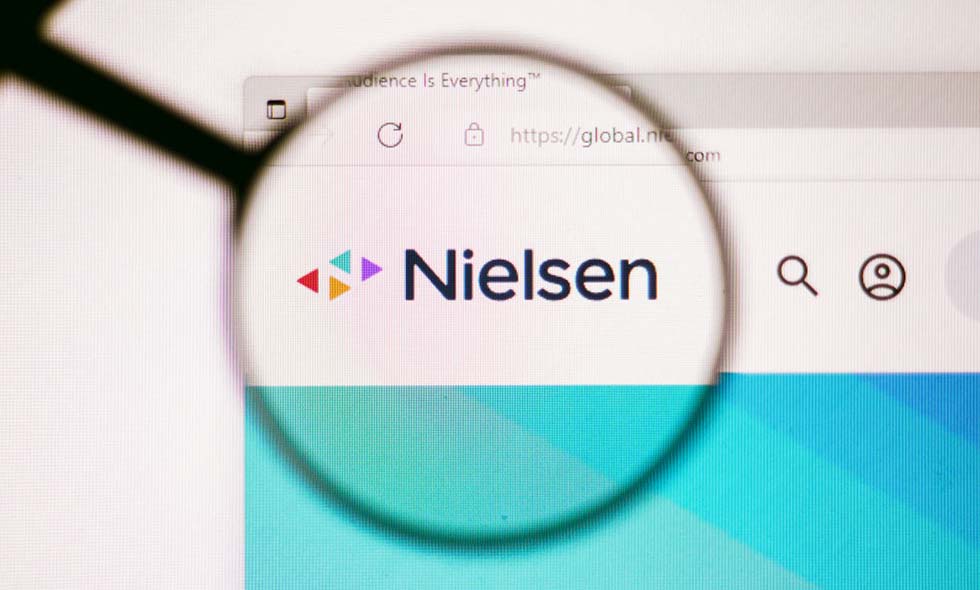Publicis Won’t Use Nielsen’s Big Data as Currency in This Upfront
Giant media buyer believes numbers haven’t been stable and there isn’t enough historical data to make projections

Giant media buyer Publicis is telling network sales executives that it does not think Nielsen’s new panel-plus-big-data currency is ready for this upfront.
Publicis will stick with Nielsen, using the measurement company’s traditional panel-based ratings. The media buyer is eager to use Nielsen’s big data product when it meets its standards, according to people involved in preliminary upfront discussions.
Publicis declined to comment for this story.
Nielsen has acknowledged that it needs to improve on its panel-based ratings system, which has dominated the TV audience measurement business for decades.
The upstart companies challenging Nielsen are basing their audience estimates on big data from set-top boxes and smart TVs. They say big data from millions of households is better for measuring today’s fragmented viewing universe than a panel of just 40,000 homes. Big data is also required for the way marketers now target specific audiences with their TV advertising.
Nielsen has been working on a new ratings stream that uses big data, with its panel serving as a “truth set” that enables it to create person-level data and adjust for errors, biases and other imperfections in the big data sets it works with.
Last month, Nielsen announced that it would make its panel-plus-big-data measurement product available for use as its preferred currency for transacting advertising deals effective in September, when upfront deals cut this spring and summer will take effect. Nielsen will also continue to produce its panel-only ratings, and customers can use that as currency if they want.
The smarter way to stay on top of broadcasting and cable industry. Sign up below
"We've worked through the lengthy audit and accreditation process, and are confident that we will answer the outstanding questions," a Nielsen spokesperson said. "We understand that bringing major product enhancements to the marketplace requires our clients to adapt and embrace change."
Publicis has been a key player in testing Nielsen’s new methodologies along with the Walt Disney Co.
One of Publicis’ concerns is that it has less than a year of what Nielsen calls “impact data,” a sample of what the new ratings would look like if they were in effect this TV season. Publicis does not believe it has a sufficient amount of historical data to be able to make projections about how many people will see the commercials it plans to buy.
It’s not good business to invest billions of dollars in commercials without reliable projections, media buying sources noted.
The Nielsen impact data also has not been stable, with big fluctuations. And while some of the changes resulting from a change in methodology seem to make sense, it also includes anomalies that defy explanation–another sign the data is not ready for prime time.
On top of that, a lot of the data generated covers the period when the Writers Guild of America and actors union SAG-AFTRA were on strike, eliminating most of the original programming on linear networks and boosting streaming. That also makes it hard to project when the broadcast networks will start their fall schedules.
The big-data products from other measurement companies are similarly not ready for this upfront, in Publicis’s view. That's why the media agency will continue to use the Nielsen panel data many in the industry call outdated as its currency for transactions.
Publicis is hardly the only client with concerns about Nielsen’s big data methodology. Nielsen had planned to roll out its big data a year ago, but admitted it wasn’t fully baked.
After the pandemic cut the number of people participating in its panel, Nielsen lost Media Rating Council accreditation for its panel-based national measurement system. It regained the accreditation for its panel-based ratings, but there have been delays in getting approval for adding big data.
Nielsen decided to make its panel-plus-big data rating available without MRC accreditation.
At the same time, Nielsen competitors VideoAmp, Comscore and iSpot received various levels of certification from the buyers and sellers participating in the U.S. Joint Industry Council on Measurement. Nielsen has declined to work with the JIC.
In March, Comscore received MRC accreditation for measuring household-level viewing.
Using data from 45 million households and 75 million Dish Network, DirecTV, Roku, Vizio and Comcast devices, Nielsen’s panel-plus-big-data measurement produces audience estimates that are 4% to 5% higher than employing panels alone. Ratings for most shows are up slightly or flat, Nielsen said.
But for some networks, like Spanish-language giant TelevisaUnivision, the gains are much larger. TelevisaUnivision plans to use the new system in the upfront.
Jon has been business editor of Broadcasting+Cable since 2010. He focuses on revenue-generating activities, including advertising and distribution, as well as executive intrigue and merger and acquisition activity. Just about any story is fair game, if a dollar sign can make its way into the article. Before B+C, Jon covered the industry for TVWeek, Cable World, Electronic Media, Advertising Age and The New York Post. A native New Yorker, Jon is hiding in plain sight in the suburbs of Chicago.

